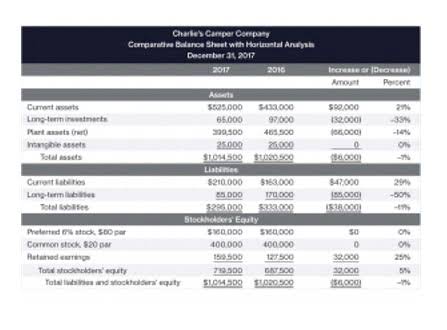There are some financial terms in the world of business that might throw managers off a little. We have put together a detailed guide, providing the definition of this important term and what exactly it’s used for. As a practical entrepreneur, you can’t expect everything to go your way.
As a separate designated area for small expenses, petty cash is used on the daily. Whether it’s the receptionist popping out for a book of stamps or you need to get a bunch of flowers for someone’s birthday. Now the custodian will let the cash balance go till INR 10 before replenishing it.
But this is supposed to help the key holders keep track of what is spent where, as well as how much petty cash is available. Operational costs like staff salaries, utilities and subscriptions should stick to the general expenses (trust us). Use our product selector to find the best accounting software for you. To know more about Happay and how to manage your branch petty cash more efficiently, schedule a demo with us today.
Postage and packing supplies, birthday cards and cakes, taxi fares and parking meters. These are just a few examples of what can be found on the average petty cash expense list. It’s easy to see why many choose to dip their fingers into the petty cash box and keep things simple instead.
Petty cash is a small amount of cash kept on hand to cover small, and often unexpected, expenses that pop up during a business day. You might use money from the petty cash fund to pay for minor expenses such as postage, Uber fares, or reimburse someone $10 for bringing in a box of donuts. Every month, or as cash is needed, the custodian should summarize the petty cash log by expense account and record a journal entry debiting each expense and crediting petty cash. However, the petty cash custodian may perform weekly or daily reconciliation to keep track of the fund balance.
The petty cash custodian refills the petty cash drawer or box, which should now contain the original amount of cash that was designated for the fund. The cashier creates a journal entry to record the petty cash receipts. The balance in the petty cash account should now be the same as the amount at which it started. When a petty cash fund is in use, petty cash transactions are still recorded on financial statements.
- The cash transfer must be recorded by debiting petty cash and crediting the checking account.
- Lastly; you must regularly review and reconcile your petty cash funds.
- It works well to cover small impromptu expenses—like a tip for the kid delivering pizzas to the lunch meeting, or cab fare home for employees working late.
- Managing petty cash with cards creates less of a hassle for the company.
- Typically, those individuals know they are authorized and understand the approved uses for their company’s petty cash.
- However, larger companies might have petty cash available to individual departments because smaller purchases might be more frequent.
Whether this is once per week or once per month will depend on the number of transactions made with petty cash. Alongside always getting a receipt, there are several other petty cash guidelines to protect your business and its assets. Determine the sum of all of the receipts from purchases made in the current accounting period.
Table of ContentsToggle Table of ContentToggle
This editorial content is not provided by any financial institution. The Ascent is a Motley Fool service that rates and reviews essential products for your everyday money matters. Get free online marketing tips and resources delivered directly to your inbox. Try Shopify for free, and explore all the tools and services you need to start, run, and grow your business. Harold Averkamp (CPA, MBA) has worked as a university accounting instructor, accountant, and consultant for more than 25 years. He is the sole author of all the materials on AccountingCoach.com.
- Determine the sum of all of the receipts from purchases made in the current accounting period.
- After the money is spent, a petty cash receipt should always be given to accounting in order to aid the petty cash reconciliation process.
- Overall, there’s a total of $500 in the lockbox after replenishment.
Sign up to receive more well-researched small business articles and topics in your inbox, personalized for you. Eric Gerard Ruiz is an accounting and bookkeeping expert for Fit Small Business. He completed a Bachelor of Science degree in Accountancy at Silliman University in Dumaguete City, Philippines. Before joining FSB, Eric has worked as a freelance content writer with various digital marketing agencies in Australia, the United States, and the Philippines. This publication is provided for general information purposes only and is not intended to cover every aspect of the topics with which it deals.
Get started with Happay now!
The petty cash receipts are logged into the company’s General Ledger as credits to the petty cash account, and probably debits to several different expense accounts. When the petty fund is replenished, usually by drawing on a company-issued check, it’s recorded as a debit to the petty cash account and a credit to the cash account. A petty cash custodian will fill out petty cash vouchers, which act as another record of money disbursed. Either the custodian or the employee who completed the transaction can record this journal entry. The custodian is then responsible for recording transactions in the company’s general ledger and the petty cash balance sheet. As part of a company’s cash, a petty cash fund is drawn on its checking account, cashing that check and giving the currency and coins to the custodian.
Consider petty cash software to streamline all expenses
Joshua is a marketing content professional with a background in education and retail. He studied Creative Writing and has five years of experience in content writing. If you need to replenish the funds every few days, it probably means your fund is too small. Therefore, it is appropriate to keep only enough petty cash available for emergency and convenience needs.
Using petty cash
Most businesses have a small amount of cash readily available to make certain purchases, this is commonly known as petty cash. The person using petty cash does not have to initiate a purchase order for which multiple approvals are required. Since the amount involved is usually small, petty cash can be used immediately by employees who are previously authorised. Petty cash is hard cash set aside for a specific set of purposes, small business expenses, and incidentals. An employee at a civil engineering firm — let’s call her Jane — needs to send hard copies of building plans to the local government office.
Petty Cash Definition – What Is Petty Cash?
Therefore, during the reconciliation process, the receipts and remaining cash in the box must equal the original petty cash amount. Most companies will keep between $100 and $500 in a petty cash fund, making it easy to take care of inexpensive purchases that don’t warrant a credit forecasting the balance sheet card. However, larger companies might have petty cash available to individual departments because smaller purchases might be more frequent. An accountant will typically write a cheque to “Petty Cash” to fund the petty cash account and cash this cheque at the company’s bank.
Maybe you have an unexpected client drop by and you want to send out for bottled water or soft drinks. Small businesses handle small expenses like this by using a petty cash fund. Most companies maintain a petty cash fund balance of anywhere from $100 to $500, but the amount will depend on your petty cash needs. To illustrate further, assume that we have a fund balance of $500.
While petty cash funds only take care of small expenses, these funds still need to be managed correctly. Keeping track of these petty cash expenses helps you to capture all your tax-deductible expenses. The best way to record these expenses is by collecting petty cash receipts. These receipts should match the replenishment of funds within the recorded periods.
Depending on the types of expenses and your industry, you may also be able to claim itemized deductions for these expenses. For example, say your small business provides specific services for local business owners. Another business owner walks into your office at 10 a.m., and you decide you need some refreshments for the meeting. So you ask an employee who doesn’t normally make business purchases to pick up the refreshments. That employee could be reimbursed later using petty cash, or you could give them money from petty cash and have them bring you the change and receipt. The petty cash account covers business-related expenses generally categorized as miscellaneous expenses.


